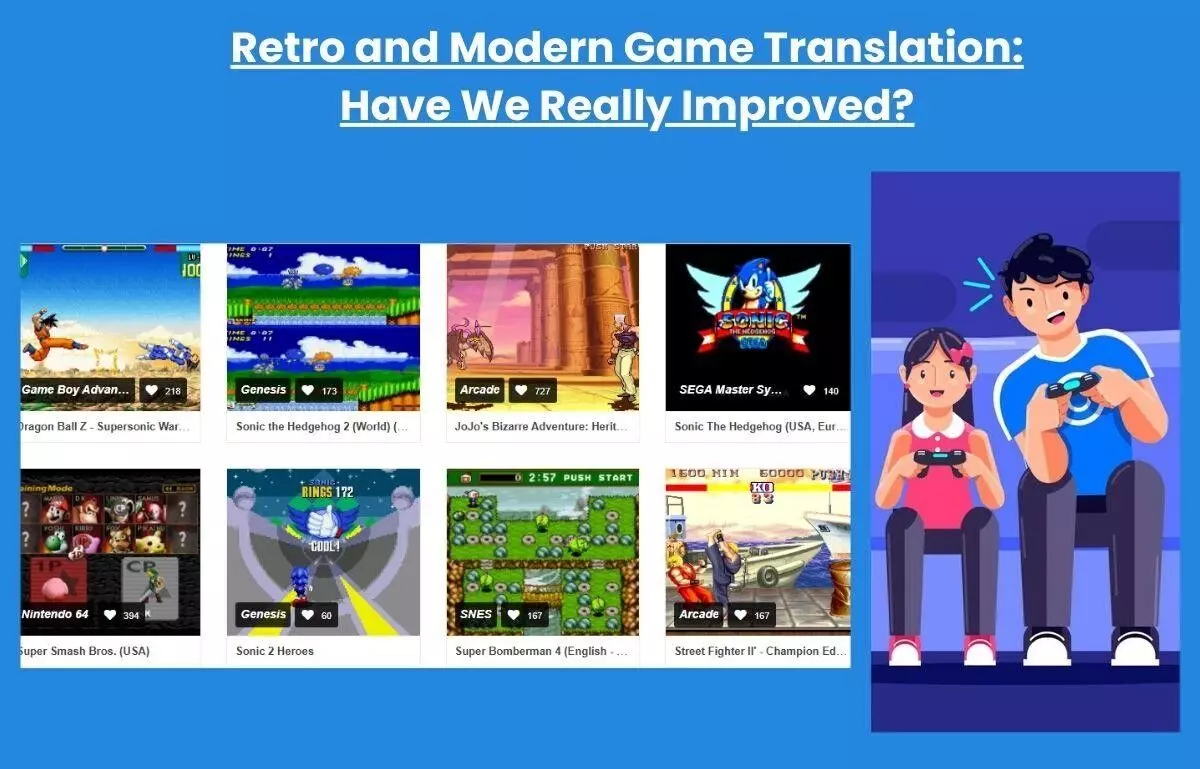Retro and Modern Game Translation: Have We Really Improved?
image for illustrative purpose

Video games have always been a fascinating phenomenon for audiences. Even in the start, when games were completely something new and few people understood gameplay, they were still in high demand. Since the start of games in 1970 to this date, games have had profound success. Furthermore, video game translation services have played an important role in making them an understandable concept for diverse gamers all across the world. Game translation itself has evolved with games all these years.
This evolution brings us to the core question: have we really improved from the traditional game translation methods or not? Of course, we have. Read on to find out how!
Retro Game Translation
Retro game translation, or traditional game translation, refers to the old methods used for the translation of a game. As mentioned earlier, just like the development of games from simple consoles to 3D has impacted the gaming industry, so has their translation. The retro game translation industry consisted of translating games word for word. Game translation began in the 1970s with literal translations.
No Difference Between Game Translation and Localization
Today, we know that there is a difference between game translation and game localization. However, in the 1970s both these terms were used interchangeably. Game translation was in its infant era, which means it was still developing. The old arcade games mainly consisted of gameplay, and just the name of the game and a few texts on the screen were translated. Because the gaming industry was still in its developing era and there were fewer games in the market, audiences used to play games without even understanding much. The linguistic differences hindered the comprehensibility of the game, but players were just about getting a basic gaming experience, and they overlooked that part.
Box and Docs Localization
As both terms were used interchangeably, there was no attention towards cultural sensitivity in games. Then came box and docs localization, where only the game packaging and manual was literally translated. Also, the name of the game was somewhat translated, and no change was done in the video game. It was before the digital distribution of games that they came in packages and had manuals with them. These manuals explained the gameplay and were not that efficiently translated. In the start of game translation, this box and doc localization played a very crucial role in facilitating gameplay for gamers.
This traditional method of translation was popular in the 1980s and the 1990s. There was inconsistency in this type of translation, as translation solutions were not that accurate. Sometimes the translated manuals were misleading and hindered the gameplay. For example, early Japanese role-playing games had box art and design that dramatically differed from the original versions. The design consisted of hyper-realistic artwork instead of the anime-inspired designs that were a part of the game.
How Has the Game Translation Landscape Changed?
Over the years, the game translation industry has gone under massive changes. First of all, the difference between translation and localization has been cleared. A game localization agency is the one offering localization services that transform a game as per the language, cultural, and functional demands of the target audiences. The user interface and other UX/UI features of the game are made adaptable for game lovers. Culture has become an important part of the game translation industry, where culturally sensitive translations are crucial for every game.
Integration of AI Translation Solutions
In the realm of AI translation solutions, machine translation is a famous name. Hence, without the use of human translators, video games are translated. Despite the superb efficiency of AI, there is still a need for human translators as they are more able to culturally translate games for the target audiences.
Translation Goes Side By Side with the Development Process
With the rising demand for native translation solutions, games are translated for every market. Actually, game translation has become a trend as well as a necessity, which is why game translators are hired during the development of games. Developers and translators work side by side in shaping a game for global success. For example, the famous AAA Chinese video game Black Myth: Wukong was originally in Chinese, but its English translation was also released with the original version.
Professional Side of Games
With esports tournaments, games have gained the status of being a professional career, which has again prompted demand and technological advancements for game translation. Games played in these tournaments are meticulously translated so that diverse gamers can understand them and participate as well.
Final Words!
Any Progress So Far? Yes, there has been tremendous progress so far. From literal to cultural and niche language translation, we have come a long way. The level of translation has evolved so much that it has become difficult to tell whether a game is in its original language or a translated one. We have evolved from literal and box and docs localization to cultural sensitive translation solutions in the game translation industry.

